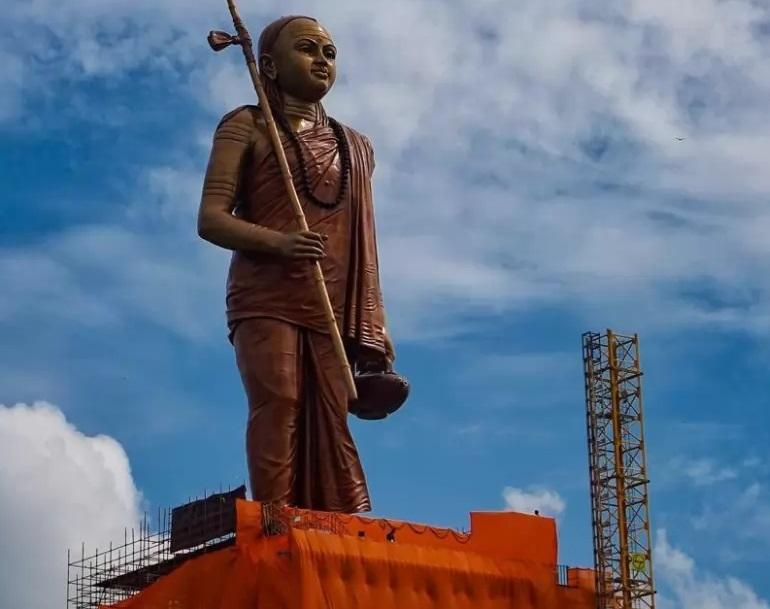Important Facts For Prelims
Shankaracharyas
- 19 Jan 2024
- 4 min read
Why in News?
The decision of the four Shankaracharyas to abstain from attending the inauguration of the Ram Temple in Ayodhya has stirred considerable interest.
Who are the Shankaracharyas?
- About: Shankaracharya (teacher of the way of Shankara), is a religious title used by the heads of the four cardinal mathas or peeths believed to have been established by Adi Shankara (c 788 CE-820 CE).
- According to tradition, they are religious teachers who belong to a line of teachers going back all the way to Adi Shankara himself, however, historical evidence regarding the same is scarce before the 14th century CE.
- Mathas: The four mathas are in Dwarka (Gujarat), Joshimath (Uttarakhand), Puri (Odisha), and Sringeri (Karnataka).
- They serve as religious shrines, temples, libraries, and residences. They play a crucial role in preserving and propagating Shankara's tradition.
- There is little historical evidence for the existence of these mathas prior to the 14th century CE, when the Vijayanagara kingdom began to patronise the Sringeri matha.
Who was Adi Shankara?
- About: Adi Shankara or Adi Shankaracharya was an 8th-century Indian philosopher and theologian, considered one of the most influential figures in the history of Hinduism
- He is believed to be born in Kalady village in Kerala.
- Initiated into studies by Govindacharya, Shankara travelled extensively, challenging philosophical traditions, and establishing mathas.
- Key Contributions:
- Systematized Advaita Vedanta: Provided a framework for understanding the non-dualistic nature of reality.
- Illuminating Hindu Scripture: Authored 116 works, including commentaries on Upanishads, Brahmasutra, and the Bhagavad Gita.
- Promoted Bhakti movement: Emphasised the importance of devotion and surrender to God, paving the way for later devotional movements.
- Major Works/Commentaries:
- Bhashya Granthas:
- Brahma Sutras
- Isavasya Upanishad
- Kena Upanishad
- Katha Upanishad
- Prasna Upanishad
- Mundaka Upanishad
- Mandukya Upanishad
- Mandukya Karika
- Bhagavad Gita
- Prakarana Granthas:
- Vivekachudamani
- Aparokshanubhuti
- Upadesasahasri
- Swatma Nirupanam
- Atma bodha
- Sarva Vedanta Sara Samgraha
- Advaita Anubhuti
- Brahma anuchintanam
- Sadachara anusandhanam
- Hymns and Meditation Verses:
- Sri Ganesa Pancharatnam
- Ganesa Bhujangam
- Subrahmanya Bhujangam
- Bhashya Granthas:
Note
However, the authorship of many works attributed to Shankara remains disputed. But Shankara's legacy extends beyond metaphysics and theology, incorporating a near-nationalistic interpretation of faith, philosophy, and geography.
- Core Tenets of Advaita Vedanta:
- Advaita Vedanta posits an ontological position of radical nondualism.
- It asserts that perceived reality is ultimately illusory (maya), and brahman is the only true reality, transcending empirical plurality.
- Focuses on the unity of atman (individual consciousness) and brahman (ultimate reality).
Note
A 'Statue of Oneness' dedicated to Adi Shankaracharya, standing at a height of 108 feet, has been unveiled on Mandhata mountain in the Khandwa district of Madhya Pradesh.







